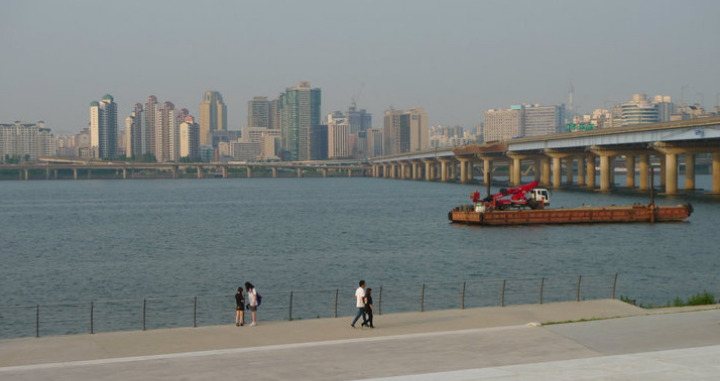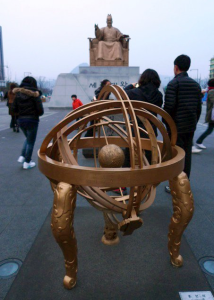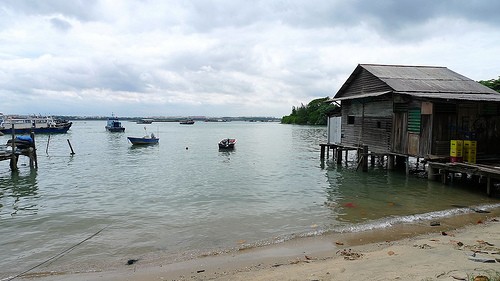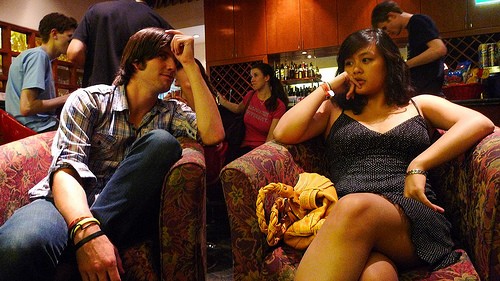
Yesterday my friend Coleman told me about a New York Times Style Magazine piece about Seoul (and South Korea as a whole). It’s a fairly good read for a handful of quotes and cultural anecdotes that are unmistakably Korean.
On urban form, architecture and culture from the artcle:
- If “the Miracle on the Han” is a tribute to the rise of South Korea (whose gross domestic product is now the 15th largest in the world), it is also a study in urban development gone awry. To survey Seoul from above, from the wan, smoggy sky to the grim, phalanx-like clusters of apartment towers down to the malls, streets and sidewalks, is to countenance a world of endless grays without respite. The creation of so much housing and functional infrastructure is no doubt a stunning technological accomplishment. But it also can feel suffocating, devoid of green, of spiritual egress, of uplift or creative expression of any sort. As Cho remarks, “It’s the complete failure of urbanism.”
- “For me, it felt like the whole place was an adolescent about to turn 18. If the country was the homely nerd from high school, it seems about to become a supermodel.”
- “The price of such carefully guided progress has, for the most part, been the submission of individuality and creativity. ‘We’re like robots,’ said Chun…Koreans work, work some more and do not question their government.”
- “While their elders, raised in a third world country, dress in somewhat grim proletarian styles (derby caps, down vests), the younger people in this cafe were dressed in Uggs or Converse high-tops, skintight jeans and baseball caps.”
- “I would hear continually throughout my visit: ‘Oh, that building got torn down.’ ‘Oh, I guess that building isn’t here anymore.'”
- “In Asia, he said, Koreans are often compared to Irish and Italians. They’re highly emotional, they like to drink, they like to read, they’re very vain, but they’re also very warm.”
- “My next thought, of course, was how much longer they might last. The city is going to keep changing — and very fast. Today, it’s nowhere near as ‘cool’ as, say, Tokyo or London. And yet it’s impossible to escape the feeling that Seoul is the future. It throbs. As Chun called it, it’s ‘a 24-7 city,’ open late, eager to do business, confident about what tomorrow may bring.”
- “For Kim and Kwon, Korea had reached the limits of traditionally defined ‘accomplishment.’ It kind of seemed like a good idea to let the society relax, download a bit.”

The article infers that because Seoul now has its financial success after its rapid industrialization, a focus on a new urbanism will allow it to compete on the world stage as an world city. Much of the cookie-cutter construction (not just housing) needs to be changed and some new-age architecture needs to be put in place in order for that to happen.
As of now, Seoul has no recognizable skyline or iconic buildings that make it standout from other world cities. N’Seoul Tower stands out on top of Namsan, but the tower itself is fairly standard looking. Sure, Seoul also ranks number 10 on Foreign Policy‘s list of the world’s most important cities, but its not reflected in its post-war urban design.
I was also reminded of something I saw in the Chosun Ilbo entitled, “Korea Ranks Low on List of Migrant Destinations.” Even though Korea is number 15 in the world for GDP, it ranks lower than Zambia and Turkmenistan for countries people want to move to. Singapore topped the list.
What is really the firs thing people think of when you say, “Seoul.” Likely, the first thing is the war and Samsung a close second. Without an outstanding quality or image to those who have not visited it likely doesn’t rank high on people’s lists. Korean material goods are all over the world, but they aren’t necessarily connected with Korea itself.
If Seoul can personify itself in a way the world could recognize, it can grab everyone’s attention and connect the success of its industry to its cities and culture.
I liked this article because it recognizes the possible future beauty of the city. As long as Koreans continue to read poetry, expand artistic en devours and realize that beauty and art can be incorporated into city design. Given the projects in development mentioned in the article, I see it as a possibility.



